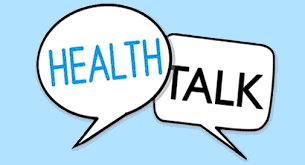INFECTIOUS DESEASES AND THEIR TREATMENT
Infectious diseases are disorders caused by
organisms — such as bacteria, viruses, fungi or parasites. Many organisms live
in and on our bodies.
They're normally harmless or even helpful, but under
certain conditions, some organisms may cause disease.
Some infectious diseases can be passed from
person to person. Some are transmitted by bites from insects or animals. And
others are acquired by ingesting contaminated food or water or being exposed to
organisms in the environment.
Signs And Symptoms
Signs and symptoms vary depending on the organism
causing the infection, but often include fever and fatigue. Mild infections may
respond to rest and home remedies, while some life-threatening infections may
require hospitalization.
Common infectious diseases, such as measles and
chickenpox, can be prevented by vaccines. Frequent and thorough hand-washing
also helps protect you from most infectious diseases.
Symptoms
Each infectious disease has its own specific signs
and symptoms. General signs and symptoms common to a number of infectious
diseases include:
Fever
Diarrhea
Fatigue
Muscle aches
Coughing
When to see a doctor
When To Seek Medical Attention
Seek medical attention if you:
Have been bitten by an animal
Are having trouble breathing
Have been coughing for more than a week
Have severe headache with fever
Experience a rash or swelling
Have unexplained or prolonged fever
Have sudden vision problems
Request an Appointment at Mayo Clinic
Causes
Infectious diseases can be caused by:
Bacteria: These one-cell organisms are responsible
for illnesses such as strep throat, urinary tract infections and tuberculosis.
Viruses: Even smaller than bacteria, viruses cause
a multitude of diseases — ranging from the common cold to AIDS.
Fungi: Many skin diseases, such as ringworm
and athlete's foot, are caused by fungi. Other types of fungi can infect your
lungs or nervous system.
Parasites. Malaria is caused by a tiny parasite
that is transmitted by a mosquito bite. Other parasites may be transmitted to
humans from animal feces.
Direct contact
An easy way to catch most infectious diseases is
by coming in contact with a person or animal who has the infection. Three ways
infectious diseases can be spread through direct contact are:
Person to person: A common way for infectious diseases to spread is through the direct
transfer of bacteria, viruses or other germs from one person to another. This
can occur when an individual with the bacterium or virus touches, kisses, or
coughs or sneezes on someone who isn't infected.
These germs can also spread through the exchange
of body fluids from sexual contact. The person who passes the germ may have no
symptoms of the disease, but may simply be a carrier.
Animal to person: Being bitten or scratched by an infected animal — even a pet — can
make you sick and, in extreme circumstances, can be fatal. Handling animal
waste can be hazardous, too. For example, you can acquire a toxoplasmosis
infection by scooping your cat's litter box.
Mother to unborn child. A pregnant woman may pass
germs that cause infectious diseases to her unborn baby. Some germs can pass
through the placenta. Germs in the vagina can be transmitted to the baby during
birth.
Indirect contact
Disease-causing organisms also can be passed by
indirect contact. Many germs can linger on an inanimate object, such as a
tabletop, doorknob or faucet handle.
When you touch a doorknob handled by someone ill
with the flu or a cold, for example, you can pick up the germs he or she left
behind. If you then touch your eyes, mouth or nose before washing your hands,
you may become infected.
Insect bites
Some germs rely on insect carriers — such as
mosquitoes, fleas, lice or ticks — to move from host to host. These carriers
are known as vectors. Mosquitoes can carry the malaria parasite or West Nile
virus, and deer ticks.



Comments
Post a Comment